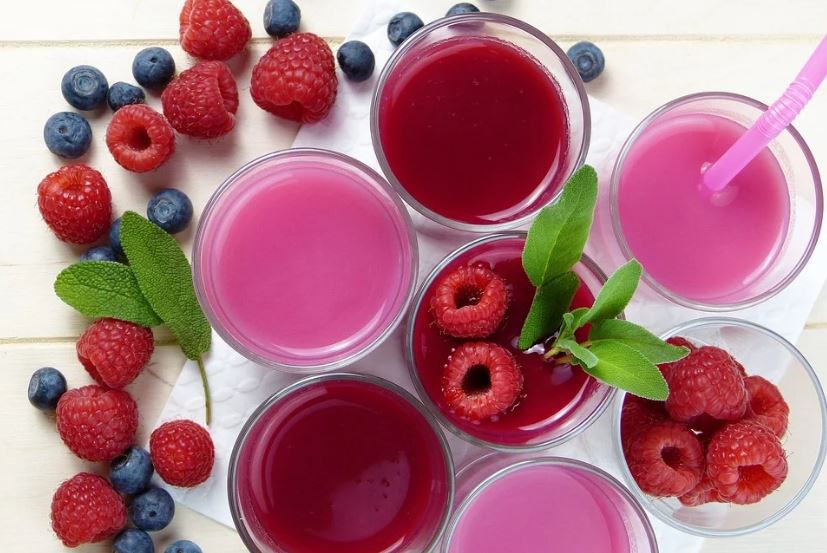Juice cleanses, also called a juice fast, is a detox diet that involves consuming only fruit and vegetable juice for at least one to three days. Most people who do the juicing cleans believe that drinking vegetable and fruit juices fill the body with healing nourishments while flushing waste and toxins. Aside from that, they think that juicing cleanse can also help support the body’s natural detox process by clearing refined foods, sugar, and caffeine. But experts believe that these claims lack research, and any weight loss during the juice cleanse can be regained once regular eating habits are continued.
What Can You Eat During a Juice Cleanse?

Vegetables and fruits that are used to make juices often include kale, celery, apple, beets, cabbage, leafy greens, and spinach. Take note that bananas and avocados have low water content, so they do not juice well, but they work well if you want smoothies.
Most people who practice juice cleansing prefer to use organic produce. But if it’s unavailable, it is best if you use a fruit and vegetable wash to help remove pesticides residues from your ingredients.
WHAT TO EAT | WHAT NOT TO EAT |
Fresh, raw juice made from vegetables and fruits | Sugar and Sweets |
Gluten-free vegan meals | Processed foods |
Almond milk | Meat, poultry, and dairy |
Vegetable broth | Caffeine |
Raw vegetables such as peppers, celery, and carrots | Alcoholic beverages |
A typical juice cleanse has three stages, and these are:
- Preparation Stage –For at least three to five days before you start your juice cleanse, you should gradually eliminate refined sugar, coffee, dairy products, meat, alcohol, and nicotine so that there will be fewer cravings, headaches, and other withdrawal symptoms when you start your cleanse. During the preparation period, it is highly encouraged to increase intake of fresh fruits, vegetables, as well as fluids.
- Cleanse Stage – You should at least drink 32 ounces of juice or smoothies daily from the first to the fourth day of the actual cleanse. Half of it should consist of vegetable juice. If you feel hungry or uncomfortable, you can eat celery, carrots, a salad, or a piece of fruit.
- Post-cleanse Stage– After your juice cleanses, you should eat lightly for the next few days. Gradually add solid foods back to your diet over the course of several days.
To maximize nutrient absorption, juice cleanses experts recommend drinking juice slowly rather than gulping it down in one sitting. When you’re in a juice cleanse, you typically consume juice a couple of hours apart. The final drink of the day should be at least three hours before your bedtime. A typical juice cleanse schedule might look like this:
Time | What to Do |
When you wake up | Drink lukewarm water with a squeeze of fresh lemon juice. |
8:00 AM – 9:00 AM | Juice, preferably green vegetable juice |
10:30 AM – 11:30 AM | Juice or smoothie/cleanse food |
1:00 PM – 2:00 PM | Juice or smoothie/cleanse food |
3:00 PM – 4:00 PM | Juice or smoothie/cleanse food |
5:00 PM – 6:00 PM | Juice, or smoothie/cleanse food |
6:00 – 8:00 PM | Almond or cashew nut milk or Smoothie |
Breaking Your Juice Cleanse
After you complete your juice cleanse, sticking to a vegetable-rich diet is advisable. You can either eat them raw or slightly steamed along with fruit or nuts as snacks. Keep in mind that portion sizes should be small, and your diet should be just like what you did when you were preparing for your cleanse. Absolutely no sugar, wheat, coffee, processed foods, dairy, and gluten-containing foods.
As the days go by, incorporate more plant foods such as brown rice, beans, or quinoa into your diet. Slowly add back foods that you would like to have in your regular diet. By the fifth day, you can continue eating regular meals after you finish your cleanse.
What are the Pros and Cons of Juice Cleanse?
While consuming freshly juiced vegetables and fruits may sound healthy and may seem like they bring several health benefits, consuming nothing other than juice for three to four days is not necessarily sustainable or beneficial in the long term. Detoxification or juicing diets may work if you want to lose weight quickly, but take note that once you come back to your regular diet, this may lead to weight gain.
PROS | CONS |
Better digestion | May lead to kidney, liver, or gallbladder problems. |
Increased energy | A temporary diet may not give you long-term results. |
Improved health |
Conclusion
Following a juice can give you a short-term boost if you want to start a new healthy eating program or if you want a reset after a few days of giving in to your food cravings. However, it does not guarantee a long-term weight loss program. Because following a strict juice fast for three or four days may only give you short-term weight loss, and it does not teach you healthy skills such as healthy meal planning and preparing, which is needed if you want sustained weight loss.
Consuming fresh vegetables or fruit juice can be a part of a healthy and balanced diet. However, it would be best to keep in mind that juice lacks essential dietary fiber and should never be a substitute for whole foods. If you want to lose weight, keep in mind that it does not equal being your healthiest self. Getting enough sleep, exercising, and having a balanced diet plays an essential part in your overall health. Remember that the best diet is the one that is balanced and fits your lifestyle.




